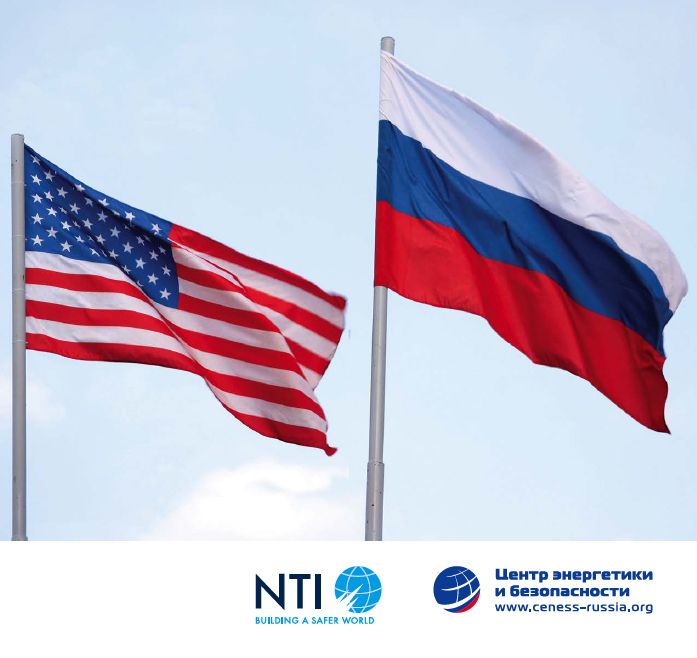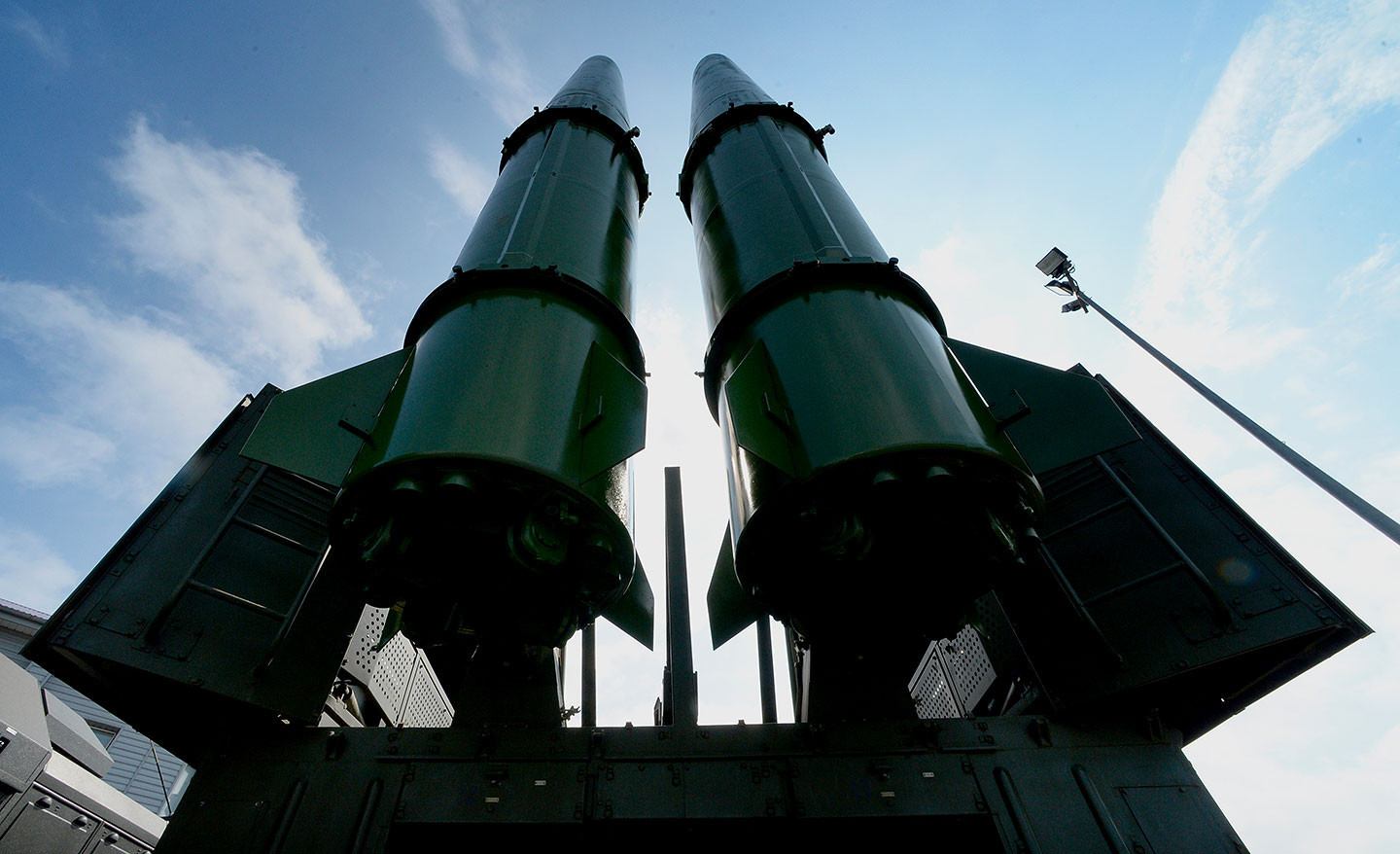Nuclear Divergence or Convergence? The Logic of Piecemeal Escalation or Piecemeal Integration
National Museum of the United States Air
Force Nuclear Missiles
(no votes) |
(0 votes) |
How to achieve mutual U.S. – Russia reductions without reducing the margin of superiority over China and others? The problem is, on the surface, intractable. It seems that the equation has no solution. Nevertheless there is a solution. It is not obvious, nor easy on the psyche. It requires changing some of the parameters and variables of the equation; and taking the risk of an effort of innovation. The solution is to invest the excess nuclear forces into a joint force.
Ilya Kramnik has shown that the equations of U.S. and Russian nuclear planning and interests not only do not converge on a potential for new reductions agreements, but rather diverge. The pressures are centrifugal not centripetal; they point to new competitive developments and deployments.
This result, while not in itself catastrophic, is distressing. It entails piecemeal mutual escalation. It increases the risks of catastrophe. It also increases the propensity toward further mutual divergences, and the stresses on the non-proliferation regime.
It behooves us to consider alternatives; notably, whether there are other ways to formulate and contextualize nuclear agreements, so as to restore a propensity toward U.S. — Russia nuclear convergence and agreement.
One such alternative — which he does mention; it is in fact the only one he mentions — is to draw the other nuclear powers into any strategic nuclear reductions agreements. That way, mutual reductions would no longer mean reducing the American and Russian margin of nuclear superiority over the others. “The others” means, mainly, China.
But he understandably moves on from this without much hope for it. It has never worked out, despite decades of trying. Neither Russia – U.S. build-ups, nor Russia – U.S. reduction treaties have been able to provide sufficient incentives for China and others to enter into serious reductions talks.
That leaves the problem unchanged. How to achieve mutual U.S. – Russia reductions without reducing the margin of superiority over China and others?
The problem is, on the surface, intractable. It seems that the equation has no solution.
The solution is to invest the excess nuclear forces — the ones that we want to destroy and reduce, yet don’t want to destroy or reduce as long as the other nuclear powers are around — into a joint force.
Nevertheless there is a solution. It is not obvious, nor easy on the psyche. It requires changing some of the parameters and variables of the equation; and taking the risk of an effort of innovation.
The only way to solve a problem
The solution is to invest the excess nuclear forces — the ones that we want to destroy and reduce, yet don’t want to destroy or reduce as long as the other nuclear powers are around — into a joint force.
Building a joint force would be done piecemeal, so as to learn how to deal with the difficulties and technicalities along the way and avoid risks. The primary nuclear deterrent forces of both sides would remain completely separate and independent. The joint force would begin as a small investment by each country of national forces that we would otherwise be negotiating about discarding, starting with old and obsolescent ones, yet which we cannot agree on discarding.
The technical issues would have to be worked out, but seem well within range of what can be safely done. The joint forces would probably be able to remain in place where they are, with only minor technical alterations to ensure joint control over their targeting and firing. Firing would probably be controlled by something like a double key arrangement, i.e. mutual veto over firing; and probably with a doctrinal commitment to mutual support for deterrence, i.e. for something like accepting the attacked country’s judgment on how to respond in case of a verified nuclear attack.
This would satisfy important concerns of both conservatives and liberals: The in-place arrangement would mean that there would be need for sharing very little in the way of technological secrets, and no risk of reverse engineering. The dual control of firing would mean that the joint force could no longer be targeted or fired against one another (or in practice against any close ally or anyone in the OSCE area), liberating all of us from a danger long hanging over our heads. It would serve instead as a joint supplementary deterrent vis-a-vis third nuclear powers, and as a bargaining chip that would add to the incentives for them to join in any reductions talks.
Some joint planning would naturally begin to take place for a joint force, once the latter existed. This would be a start on serious U.S. – Russian joint strategic planning, which is something that was often sought but never achieved in post-Cold War consultations. There were no joint or integrated forces to plan for, as there are for example in NATO under the integrated command structure, for which joint planning is a natural reflex.
Joint strategic planning for a limited joint nuclear force would tend to buttress the recognition, hitherto widespread in principle yet never consolidated in practice, of a commonality of interests on the highest strategic level. As such, it could potentially “spill over” into larger amicabilities: more mutual trust; more serious mutual consultations on the plans and purposes of the remaining separate national nuclear forces; the investment of more of them into the joint force; more relaxed discussion of nuclear reductions. It would also spill over into a better chance for mutual alignment on the urgent geopolitical issues that inevitably keep cropping up, from Syria to Iran to Ukraine, but on which — despite repeated mutual recognition in the post-Cold War era of having larger interests in common than against each other in each locale — we have had a natural strategic reflex of reverting to facing off against each other, as long as our strategic nuclear forces and doctrines have remained opposed to each other, and our strategic power accordingly measured at root against each other.
Reverse Proliferation?
Down the road, a joint force might in theory open up other possibilities. If third nuclear powers wished to join the joint force, after it was formed and consolidated, they might be invited to invest some of their forces nuclear forces in the joint force, in return for getting a share of its deterrent value. Russia and America would be in a position to insist on strict terms for this; e.g., to require that the third powers’ remaining independent nuclear forces would be an order of magnitude smaller than the remaining Russian and American national forces, in keeping with the historical status quo of the nuclear era. Despite this restriction, third countries might find considerable incentives for joining: its deterrent value could be a step up for them, because coming from a force much larger than their own; it could provide a way to denuclearize and escape the risks of being nuclear, without giving up deterrence; and, for India and Pakistan, piecemeal mutual investment in it could become a method of piecemeal mutual denuclearization.

Igor Ivanov, Sam Nunn:
Pathways to Cooperation. A Menu of Potential
U.S.-Russian Cooperative Projects in the Nuclear
Sphere. NTI and CENESS Report
All this is distant and hypothetical; but let us pursue the hypothesis to see where it might lead us. A joint force would be an innovative way of meeting the superpowers’ moral commitments under the Non-Proliferation Treaty. It would strengthen the NPT regime considerably — unlike the traditional superpower reductions way of meeting the commitment, which leads by example but at a cost of providing a greater practical opening and incentive for third nuclear forces and proliferators. It could even begin a reversal of proliferation, if the joint force were to grow to the point of replacing some country’s national forces, say, that of a small third nuclear power. This would open up the door to thinking about evolution toward a single global nuclear force. That is even further down the road hypothetically, but let us examine where it too could lead in turn. A single global force would mean no more mutual nuclear deterrence among national nuclear powers; it could not come into being until nuclear countries no longer saw a particular national interest in maintaining mutual nuclear deterrence, but if that point were reached, it would indeed be a great benefit to escape mutual assured destruction. The joint force would then be maintained solely for deterrence of break-out attempts and technologies. If international non-proliferation inspection regimes grew more effective with time, the global nuclear force could be reduced proportionately. Whether it could someday be reduced to zero is a question beyond the scope of this analysis. It seems that nuclear forces are bound to be rendered obsolete someday, by newer and still more powerful and dangerous technologies. In that case, the joint nuclear force might be discarded, but joint control and regulation of the newer forces would be immediately advisable; and that would be dangerously unlikely to take place in good time, unless practices and structures of joint control were already well established on the nuclear level.
If third nuclear powers wished to join the joint force, after it was formed and consolidated, they might be invited to invest some of their forces nuclear forces in the joint force, in return for getting a share of its deterrent value.
Coming back from the distant future to the present: An attractive feature of it, for the two superpowers, is that the joint institutions for controlling the joint force would evolve from below, in the sense of evolving primarily out of the immediate needs of joint control by the participating countries; as such, they would respect the balance of forces that has existed between them, preserving it in a new and less dangerous form. At the same time, they would interact with and make some use of existing joint and international institutions; which means there is a possibility that they and the global institutions could ultimately converge, and in a more distant science fiction future, merge.
Science fiction seems inevitably to become science reality, when the factor of time is added. Likewise, the risks of an accident-waiting-to-happen inevitably become an accident that has happened, if left to be multiplied by enough time. That means these long-term, fantastic-sounding scenarios are not entirely fantasy. Something akin to them is inevitable, if we survive long enough. And they may be essential in order to survive very long; that is to say, to avoid giving a catastrophe-waiting-to-happen enough time to multiply into a catastrophe-already-happened. As such, these distant scenarios are important; important enough to provide an additional incentive for taking up a near-term start. Making small investments of existing forces into an initial joint nuclear force is a modest enough start, almost a token start; and a safe start, with risks considerably smaller than the ones it overcomes, and a good surplus of benefits over costs. Yet it could potentially leverage tremendous long-term effects beneficial to both parties, Russia and America, on top of its immediate benefits.
Big ideas and small ideas; detente and entente
We said at the start that this requires taking the risk of undertaking an effort of innovation. It is, to be sure, mostly a subjective risk, and a political risk; it would be run in return for escaping the objective risks of the unresolvable equation in Russian and American nuclear plans and the mutual nuclear divergence and build-up. The latter risks are by far the greater ones. Nevertheless, it is the ordinary result in most of history that the objective risks are usually taken anyway, rather than making the subjective effort to innovate and run the attendant risks. As a pure analyst, I predict the latter, routine course, as a high probability; as a citizen-analyst, I advocate consideration of the former, innovative course.
Even as a pure probability analyst, I would note two things:
1. The unresolvable equation, in which we face a divergence that is dangerous and costly, provides a motor force that could be sufficient to motivate and propel the innovative alternative.
2. We are in a new historical moment, the Trump moment. This means we need to grow out of our post-post-Cold War torpor and start thinking big again.
We thought big in the immediate period of the ending of the Cold War; that was when it was possible to talk about Russia joining NATO and about a real Russia-West and Russia–U.S. alliance, not just an adversarial partnership. But our bureaucracies were mostly stuck in the piecemeal detente assumptions of the late Cold War decades. Most experts and agencies wanted simply to accelerate the pursuit of the agenda of detente, and were unprepared to make a qualitative shift toward pursuing also entente in the here and now. Entente ideas failed to reach critical mass for implementation. The old contradictions within detente came back into view instead. Disillusionment set in.
September 11, 2001, could have marked the consolidation of a Russia-West alliance, had one been underway. It did lead to a brief new spurt of discussion of forming such an alliance. But actual changes were too little too late. Colin Powell proved right in his estimate of the meaning of 9/11; it marked “the end of the post-Cold War era”, the era when such thoughts were truly in mind.
The disillusionment brought us back to small thinking, and to a legitimate realist reticence about big ideas: they could be dangerous delusions and diversions. Piecemeal detente thinking became once again the status quo.
Now we have Trump. Which means the danger now is not from large ideas, but that we will remain stuck again in piecemeal detente thinking.
In the course of rightly cautioning against expectations of an easy Russia-America reconciliation under Trump, experts have reverted to counseling a focus on detente. The cautionary diagnosis is right; the cure wrong. Otherwise put, it is right to continue working on detente, wrong to focus on it primarily or exclusively.
What Kramnik has shown once again is that the equations of detente suffer from inherent contradictions. This is true in many spheres of mutual interaction; his proof of it is in only one the spheres, albeit a decisive one.
Focusing on detente alone makes no sense even for the purposes of detente. It is only entente that can complete the equations of detente and make them work consistently.
Entente has to be pursued piecemeal, just as as detente. The difference is qualitative — what is done — not quantitative, or the cautious, gradualist method by which it is done.
The options for thinking big and outside the box are not only open in the Trump era; they are requisite. Trump thinks big. He thinks big about Russia and the U.S. as potential allies. He likes big construction projects. And he likes projects that make a big splash — that change things dramatically and give a powerful impression.
A joint nuclear force, constructed piecemeal on solid foundations, in place of reductions for the time being: this is a project that meets all the above criteria. It would be a feat of statesmanship for the leaders of both countries. If it is reasonable to expect a failure to rise to the occasion, it is a measure of how great the triumph would be.
(no votes) |
(0 votes) |






